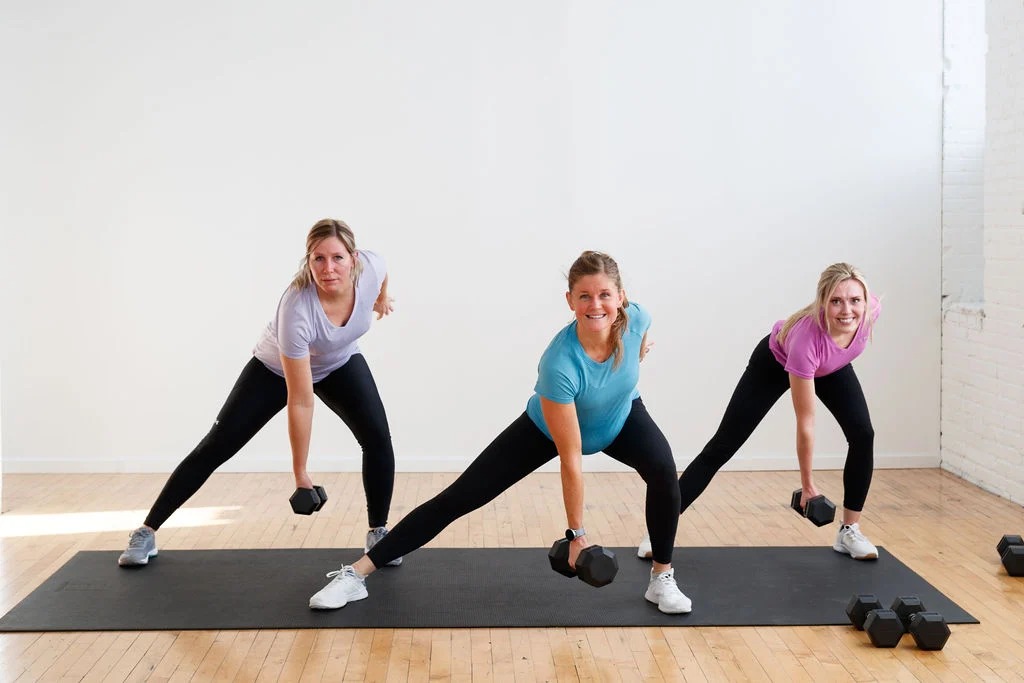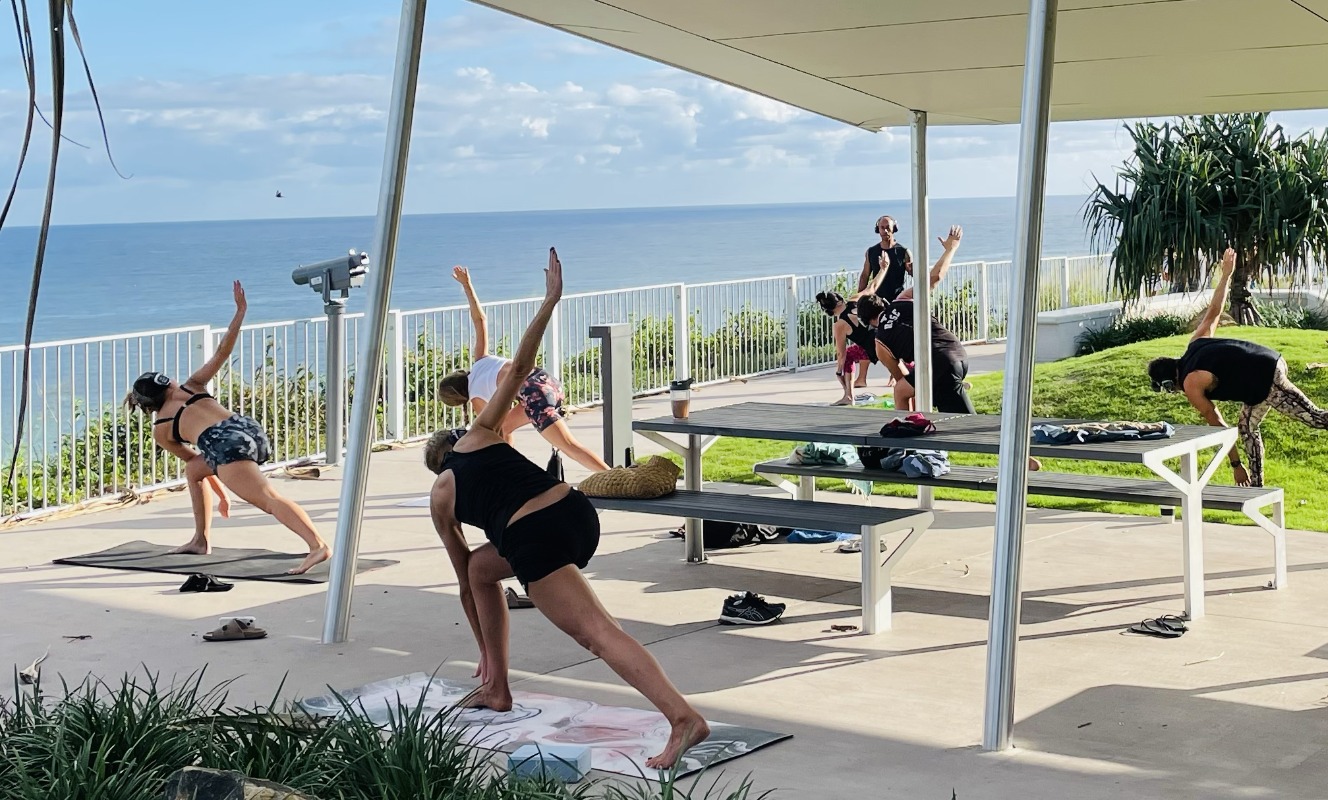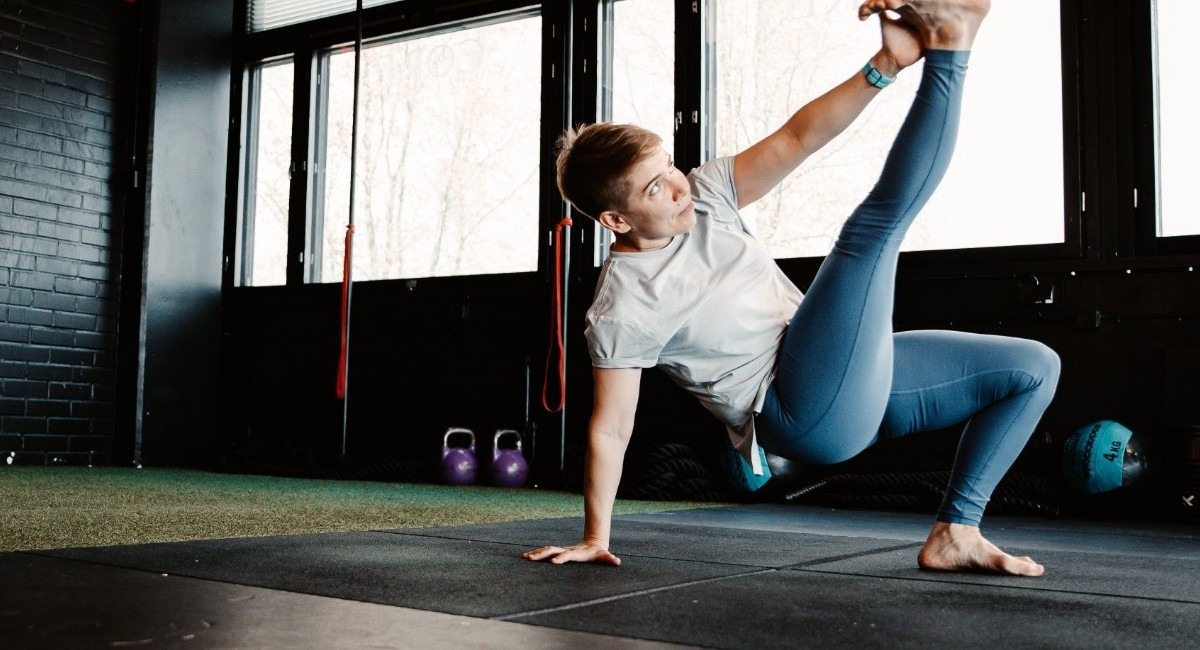
Hybrid Workouts: Mixing Yoga, Strength, and Cardio in One Session.
Hybrid workouts are the future of fitness, blending yoga, strength training, and cardio into one powerful session. They save time, boost strength, improve flexibility, enhance endurance, and reduce stress while preventing injuries. This balanced, holistic approach makes workouts engaging, effective, and sustainable for all fitness levels, offering complete physical and mental well-being in less time.
💪 Fitness Guru
44 min read · 20, Aug 2025

Hybrid Workouts: Mixing Yoga, Strength, and Cardio in One Session
In the ever-evolving landscape of fitness, the boundaries between traditional exercise modalities are fading. Today, people no longer want to commit exclusively to one form of exercise—whether it be yoga, strength training, or cardio. Instead, fitness enthusiasts are increasingly turning toward hybrid workouts: creative routines that seamlessly combine the benefits of multiple training styles into a single session.
Hybrid workouts aren’t just a passing fitness trend; they reflect a deeper shift toward holistic health. They integrate mindfulness with physical strength, endurance with flexibility, and calorie burn with recovery. In this article, we will dive deep into what hybrid workouts are, their science-backed benefits, how to structure them effectively, and practical tips for anyone—from beginners to seasoned athletes—who wishes to embrace this well-rounded approach.
What Are Hybrid Workouts?
Hybrid workouts are fitness sessions that combine two or more training modalities in a single structured workout. The most common mix today involves yoga, strength training, and cardio. This means you might move through sun salutations for mobility, pick up dumbbells for strength, and finish with a high-intensity cardio burst—all in under an hour.
The idea isn’t just to “add more exercises” but to create synergy—where each modality complements and enhances the other. For instance:
- Yoga enhances flexibility, breathing, and recovery.
- Strength training builds muscle, increases bone density, and boosts metabolism.
- Cardio improves endurance, heart health, and calorie burn.
When fused, these styles create a workout that targets the body and mind in ways that no single approach can achieve alone.
Why Hybrid Workouts Are Becoming Popular
The popularity of hybrid workouts can be attributed to several trends:
- Time Efficiency – In our busy lifestyles, combining multiple benefits in one session saves time without sacrificing results.
- Holistic Wellness – People want workouts that address not only physical fitness but also mental health, flexibility, and stress management.
- Versatility – Hybrid sessions adapt well to gyms, home workouts, or outdoor routines.
- Engagement – Mixing styles keeps exercise exciting and reduces the risk of boredom.
Science Behind the Synergy
Hybrid training isn’t just trendy—it’s supported by science. Here’s how the combination works physiologically:
- Strength and Cardio Together: Studies show that alternating between resistance training and aerobic exercise boosts fat oxidation, improves VO₂ max (a measure of endurance), and preserves lean muscle mass.
- Yoga for Recovery: Yoga stimulates the parasympathetic nervous system, reducing cortisol (stress hormone) levels and aiding muscle recovery from strength and cardio training.
- Neuromuscular Adaptation: Switching between modalities in one session challenges the nervous system, improving coordination, balance, and agility.
In essence, hybrid workouts provide complementary adaptations that enhance overall performance and health.
Structuring a Hybrid Workout
Creating an effective hybrid workout requires balance. Overemphasis on one area can diminish the benefits of the others. A well-designed routine flows through three pillars:
1. Warm-Up (5–10 minutes)
- Begin with yoga-inspired mobility flows (cat-cow, sun salutations, spinal twists).
- Dynamic stretches like lunges with torso rotations prepare the body.
2. Strength Block (20–25 minutes)
- Compound lifts (squats, deadlifts, push-ups, rows) engage multiple muscle groups.
- Use weights or bodyweight depending on fitness level.
- Example circuit:
- 12 squats → 10 push-ups → 12 rows → 10 lunges per leg.
- Repeat 3 rounds.
3. Cardio Burst (10–15 minutes)
- Options include HIIT (high-intensity interval training), jump rope, cycling sprints, or treadmill intervals.
- Example: 30 seconds sprint + 30 seconds rest × 10 rounds.
4. Yoga & Cool Down (10–15 minutes)
- Static stretches (forward folds, hip openers).
- Breathing exercises (pranayama) to restore calm.
- End with savasana (resting pose) for mind-body balance.
Benefits of Hybrid Workouts
- Improved Flexibility & Mobility – Yoga prevents stiffness from strength training and cardio.
- Enhanced Strength & Muscle Growth – Strength training builds a strong foundation, amplified by better recovery through yoga.
- Cardiovascular Health – Cardio reduces risk of heart disease and boosts endurance.
- Mental Clarity & Stress Relief – Yoga and mindful breathing promote mental well-being.
- Calorie Burn & Weight Management – Combining modalities maximizes energy expenditure.
- Reduced Injury Risk – Balanced training ensures no muscle group is neglected.
Practical Examples of Hybrid Sessions
Example 1: 45-Minute Full-Body Hybrid
- Warm-Up: 5 minutes yoga flows.
- Strength: 20 minutes (push-ups, kettlebell swings, squats, planks).
- Cardio: 10 minutes jump rope intervals.
- Cool Down: 10 minutes restorative yoga.
Example 2: 30-Minute Express Hybrid
- Warm-Up: 3 minutes sun salutations.
- Strength & Cardio Circuit (20 minutes):
- Burpees (cardio + strength)
- Weighted lunges
- Mountain climbers
- Shoulder presses
- (Cycle through 4 times).
- Cool Down: 7 minutes yoga stretches.
Tips for Beginners
- Start with bodyweight exercises before adding weights.
- Use yoga as both warm-up and recovery to avoid strain.
- Keep cardio intervals short at first, gradually increase intensity.
- Focus on proper form, not speed.
Common Mistakes to Avoid
- Overloading the Session – Trying to cram too much in one workout can lead to burnout.
- Skipping Cool Down – Neglecting yoga recovery reduces benefits and increases injury risk.
- Imbalance – Over-prioritizing cardio may hinder strength gains, or too much strength may limit mobility.
- Lack of Progression – Not gradually increasing intensity leads to plateaus.
Who Should Try Hybrid Workouts?
- Beginners: With simplified routines, it’s a well-rounded introduction to fitness.
- Busy Professionals: Time-efficient training for multiple goals.
- Athletes: Cross-training benefits enhance performance.
- Older Adults: Strength + mobility work helps maintain independence.
In today’s fast-paced world where people struggle to balance work, health, and personal life, the fitness industry has witnessed a significant shift in the way individuals approach exercise, leading to the growing popularity of hybrid workouts that combine yoga, strength training, and cardio into a single comprehensive session designed to deliver maximum results in minimal time; unlike traditional workouts that focus exclusively on one form of training, hybrid sessions merge the best of multiple worlds, providing not just physical but also mental benefits, as yoga enhances flexibility, balance, and mindfulness while strength training builds muscle, boosts metabolism, and protects bone density, and cardio improves endurance, heart health, and calorie expenditure, and when woven together in a single routine, these three elements create synergy that is far greater than the sum of its parts, offering a holistic path to fitness, wellness, and vitality; the science behind this integration is compelling because research demonstrates that alternating between resistance exercises and aerobic activity not only improves fat oxidation but also increases VO₂ max and preserves lean muscle mass, while yoga aids recovery by stimulating the parasympathetic nervous system, lowering cortisol levels, and improving mobility, thereby reducing injury risk, and when the nervous system is constantly challenged by switching modalities, neuromuscular adaptation takes place, which boosts coordination, agility, and overall performance, making hybrid training suitable for a wide range of individuals from beginners to seasoned athletes; the structure of a typical hybrid workout follows a logical flow, starting with yoga-inspired warm-up sequences like sun salutations, cat-cow, or spinal twists that gently increase circulation and joint mobility, followed by a strength block lasting 20–25 minutes where compound movements such as squats, lunges, deadlifts, rows, and push-ups are performed either with weights or bodyweight to engage multiple muscle groups, then transitioning into a cardio burst of 10–15 minutes where high-intensity intervals like sprints, jump rope, cycling, or mountain climbers elevate heart rate and burn calories, and finally finishing with a yoga cool-down that includes static stretches, hip openers, forward folds, and mindful breathing or pranayama to relax the nervous system and restore balance, with savasana (corpse pose) providing mental clarity and closure; the benefits of such an approach are extensive as hybrid workouts improve flexibility by counteracting the stiffness often caused by strength training and repetitive cardio, enhance muscle development while promoting better recovery, strengthen the cardiovascular system, reduce stress through yoga’s meditative practices, and maximize calorie burn by combining multiple energy systems, all while reducing the risk of overuse injuries thanks to the variety of movement patterns; practical examples include a 45-minute hybrid where a yoga warm-up flows into strength circuits like kettlebell swings and planks, followed by jump rope intervals and restorative yoga, or a 30-minute express hybrid where sun salutations lead into a combined strength-cardio circuit with burpees, weighted lunges, mountain climbers, and shoulder presses before winding down with seven minutes of stretching, and such workouts can be customized for different fitness levels, with beginners starting with bodyweight movements and gentle yoga stretches before progressing to heavier weights and faster cardio intervals; however, despite the advantages, common mistakes must be avoided such as overloading the session with too many exercises which can cause burnout, skipping the cool-down which reduces recovery benefits, creating imbalance by prioritizing one modality too much, or failing to progress gradually which leads to plateaus; the adaptability of hybrid training makes it ideal for many demographics—beginners can build a balanced foundation, busy professionals save time while covering multiple goals in one session, athletes cross-train for improved performance, and older adults maintain mobility, strength, and independence—making it a truly universal approach to fitness; overall, hybrid workouts embody the future of training, offering a flexible, efficient, and holistic solution that addresses the modern desire for both physical performance and mental well-being, proving that you don’t have to choose between yoga’s calm, strength training’s power, and cardio’s stamina, because when blended together thoughtfully they create a transformative experience that nurtures body and mind in equal measure, delivering not just fitness but a sustainable lifestyle; the key lies in consistency, mindful structuring, and listening to your body so that every session becomes not just a workout but an act of self-care, leaving you stronger, more flexible, more resilient, and more centered in everyday life.
In the modern world where fitness trends evolve quickly and people seek maximum results within limited time, hybrid workouts have emerged as a revolutionary approach that combines yoga, strength training, and cardio into one seamless session, offering a holistic solution that addresses physical, mental, and emotional well-being while also being practical for busy lifestyles, and unlike traditional workouts that isolate one discipline at a time, hybrid training fuses three distinct modalities into a powerful blend that delivers strength, flexibility, endurance, and mindfulness simultaneously, creating a synergy that no single form of exercise can achieve alone, with yoga bringing in flexibility, balance, stress reduction, and breath awareness, strength training contributing muscle growth, improved metabolism, and bone density, and cardio enhancing heart health, stamina, and calorie burning, and when these elements are integrated thoughtfully, the result is a balanced, engaging, and highly efficient workout that transforms not only the body but also the mind, which is why hybrid workouts are becoming increasingly popular among fitness enthusiasts, athletes, and even beginners; the scientific foundation of hybrid training is equally compelling, as research shows that combining resistance exercises with cardiovascular training boosts fat oxidation, improves VO₂ max, preserves lean muscle, and enhances overall metabolic health, while yoga aids in activating the parasympathetic nervous system, reducing cortisol levels, aiding recovery, and improving range of motion, thereby reducing injury risk and increasing longevity of training, and when the nervous system is challenged by constantly switching between different modalities—such as moving from a yoga stretch into a weighted squat or from a push-up into a high-intensity sprint—neuromuscular adaptation occurs, improving coordination, agility, and movement efficiency, which are critical not only for athletic performance but also for daily functional fitness, making hybrid workouts a sustainable and adaptable solution for all demographics; the structure of a hybrid workout generally follows four phases beginning with a warm-up of five to ten minutes often based on yoga-inspired movements such as sun salutations, cat-cow stretches, and spinal twists to loosen joints and increase circulation, then progressing into a twenty-minute strength block that may involve compound lifts like squats, deadlifts, lunges, rows, or push-ups performed with bodyweight, resistance bands, or free weights to build strength and muscle, followed by a ten-minute cardio burst in the form of high-intensity intervals like sprinting, cycling, burpees, or jump rope to elevate heart rate and maximize calorie burn, and finally ending with a restorative yoga cool-down that includes static stretches, deep breathing, hip openers, forward folds, and savasana to bring mental calm and physical recovery, making the session complete, balanced, and rejuvenating; the benefits of such a system are vast because yoga helps counteract the stiffness and tightness often caused by strength and cardio, thereby enhancing flexibility and mobility, strength training develops a strong musculoskeletal foundation that supports metabolic function, cardio protects cardiovascular health and boosts endurance, yoga additionally lowers stress and enhances mental clarity, and the combination of all three maximizes calorie expenditure while reducing the likelihood of overuse injuries that often result from sticking to only one form of training, and practical routines can range from a full forty-five-minute hybrid workout with a yoga warm-up, a strength circuit involving kettlebell swings, push-ups, and squats, a cardio block with jump rope or sprints, and a yoga cool-down, to an express thirty-minute session that starts with sun salutations, transitions into a strength and cardio circuit mixing burpees, weighted lunges, and mountain climbers, and ends with mindful stretching, proving that hybrid workouts can be tailored for long or short timeframes without losing effectiveness; beginners can benefit greatly by starting with bodyweight movements, gentle yoga stretches, and short cardio bursts before progressing to heavier loads and longer intervals, but they must avoid common mistakes such as overloading a session with too many exercises which can lead to fatigue and poor form, skipping the cool-down which negates yoga’s recovery benefits, over-prioritizing one modality at the expense of others which disrupts balance, or failing to follow progressive overload which can cause stagnation in performance, and when practiced correctly, hybrid workouts serve a wide range of audiences, from busy professionals who need efficient routines that cover all bases in under an hour, to athletes who can use hybrid methods for cross-training and performance enhancement, to older adults who benefit from strength for independence, cardio for vitality, and yoga for mobility and fall prevention, making it truly a universal approach to fitness; overall, hybrid workouts represent the future of training by embodying efficiency, flexibility, and holistic wellness, ensuring that people no longer have to choose between yoga’s calmness, strength training’s resilience, and cardio’s stamina, but instead can enjoy the collective benefits of all three in a single intelligently designed session that nurtures both body and mind, and the key to success lies in structuring the workout properly, maintaining balance, listening to one’s body, and staying consistent over time, because with regular practice hybrid workouts not only make you stronger, more flexible, and more enduring, but also more centered, focused, and mentally resilient, turning every training session into an act of self-care and a step toward lifelong health and well-being.
Conclusion
Hybrid workouts represent the future of fitness: flexible, efficient, and holistic. By blending yoga, strength training, and cardio, one can reap multiple benefits—better strength, endurance, flexibility, and stress relief—all in a single session.
Whether you’re short on time or seeking a balanced approach to health, hybrid workouts provide the ultimate solution. They’re adaptable to all fitness levels and ensure you don’t have to sacrifice one fitness goal for another. The key is structuring them thoughtfully, listening to your body, and maintaining consistency.
Q&A Section
Q1 :- What is the main advantage of hybrid workouts?
Ans :- The biggest advantage is time efficiency—you can improve strength, endurance, flexibility, and mental well-being in one workout instead of separate sessions.
Q2 :- Can beginners try hybrid workouts?
Ans :- Yes, beginners can start with bodyweight strength moves, light cardio, and gentle yoga stretches, gradually increasing intensity.
Q3 :- How often should I do hybrid workouts?
Ans :- 3–4 sessions per week is ideal, allowing your body enough time for recovery.
Q4 :- Do I need special equipment for hybrid workouts?
Ans :- Not necessarily. Many hybrid routines can be done with just a yoga mat and bodyweight, though dumbbells or resistance bands can enhance results.
Q5 :- Can hybrid workouts replace traditional single-style workouts?
Ans :- They can, depending on your goals. For balanced fitness, they’re excellent, but athletes with specific goals (like powerlifting or marathon running) may still need specialized training.
Similar Articles
Find more relatable content in similar Articles

The Silent Workout: Fitness Without Any Equipment or Noise...
“Discover the power of silent .. Read More

Microbiome and Muscle: Gut Health as a Hidden Fitness Tool...
Unlock the hidden potential of.. Read More

Fitness Lessons from Wild Animals – Move Like Nature Intende..
“Discover how observing wild a.. Read More

The Science of Breathwork: Fitness Beyond Muscles...
Exploring how conscious contro.. Read More
© 2024 Copyrights by rFitness. All Rights Reserved.